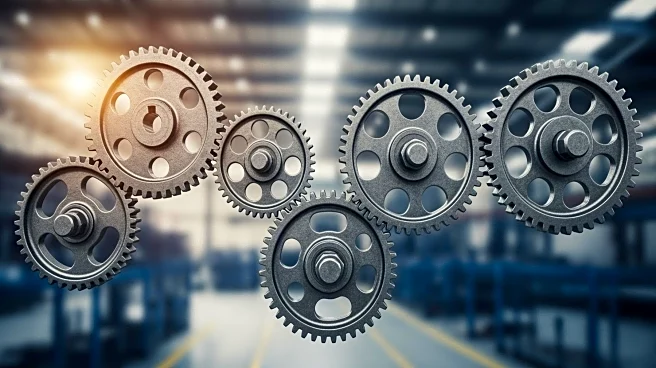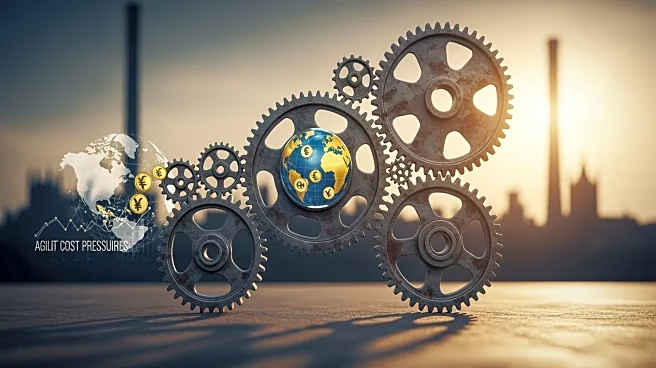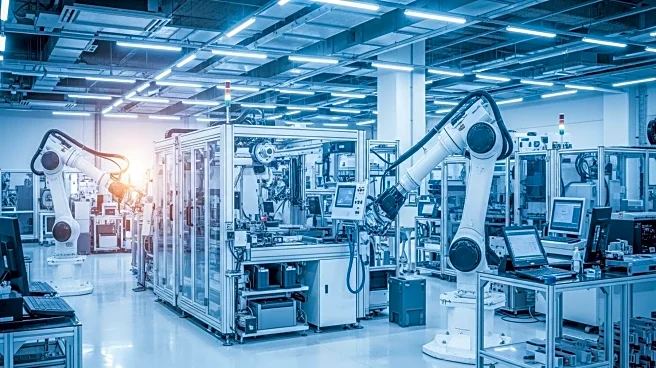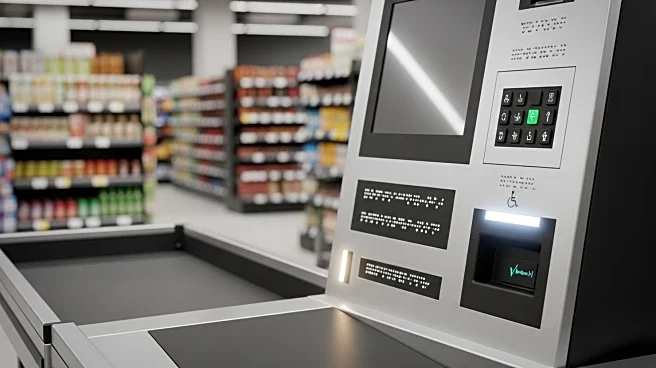What's Happening?
Industrial agility among UK manufacturers has reached its lowest point in five years, according to the 2025 Industrial Agility Assessment. The report highlights a significant drop in the number of companies
describing themselves as 'highly or extremely agile,' from 58% last year to 45% this year. This decline is attributed to sustained disruptions, organizational fatigue, and geopolitical instability. Despite ongoing digital transformation efforts, including automation and AI adoption, manufacturers are struggling to maintain agility due to cost pressures, talent shortages, and risk aversion. The report suggests that while manufacturers have not lost the ability to change, sustaining change has become increasingly difficult.
Why It's Important?
The decline in industrial agility has significant implications for the manufacturing sector, affecting its ability to respond to market demands and innovate. As manufacturers face geopolitical volatility and economic pressures, their capacity to adapt and invest in new technologies is constrained. This situation could lead to reduced competitiveness and slower growth, impacting the broader economy. Smaller firms, in particular, face challenges in investment capacity and skills, which may hinder their ability to leverage digital transformation effectively. The shift from aggressive expansion to cautious investment reflects a broader trend towards stability and resilience in the industry.
What's Next?
Manufacturers are focusing on improving agility, introducing AI to enhance decision-making, and reducing the time and cost of launching new products over the next 12-24 months. The emphasis is on stability and measured investment rather than aggressive expansion. Executives are prioritizing operational discipline and profitability, aiming for 'profitable growth' rather than growth at all costs. This cautious approach suggests a period of consolidation in the manufacturing sector, where resilience and efficiency are prioritized over transformative change.
Beyond the Headlines
The report indicates a shift in priorities, with sustainability slipping from first to fourth place among manufacturers' goals. Environmental objectives are being overshadowed by cost and resilience pressures, although some firms continue to pursue sustainable practices where they align with efficiency or customer demand. This change reflects the complex balancing act manufacturers face in adapting to current challenges while maintaining long-term commitments to sustainability.











